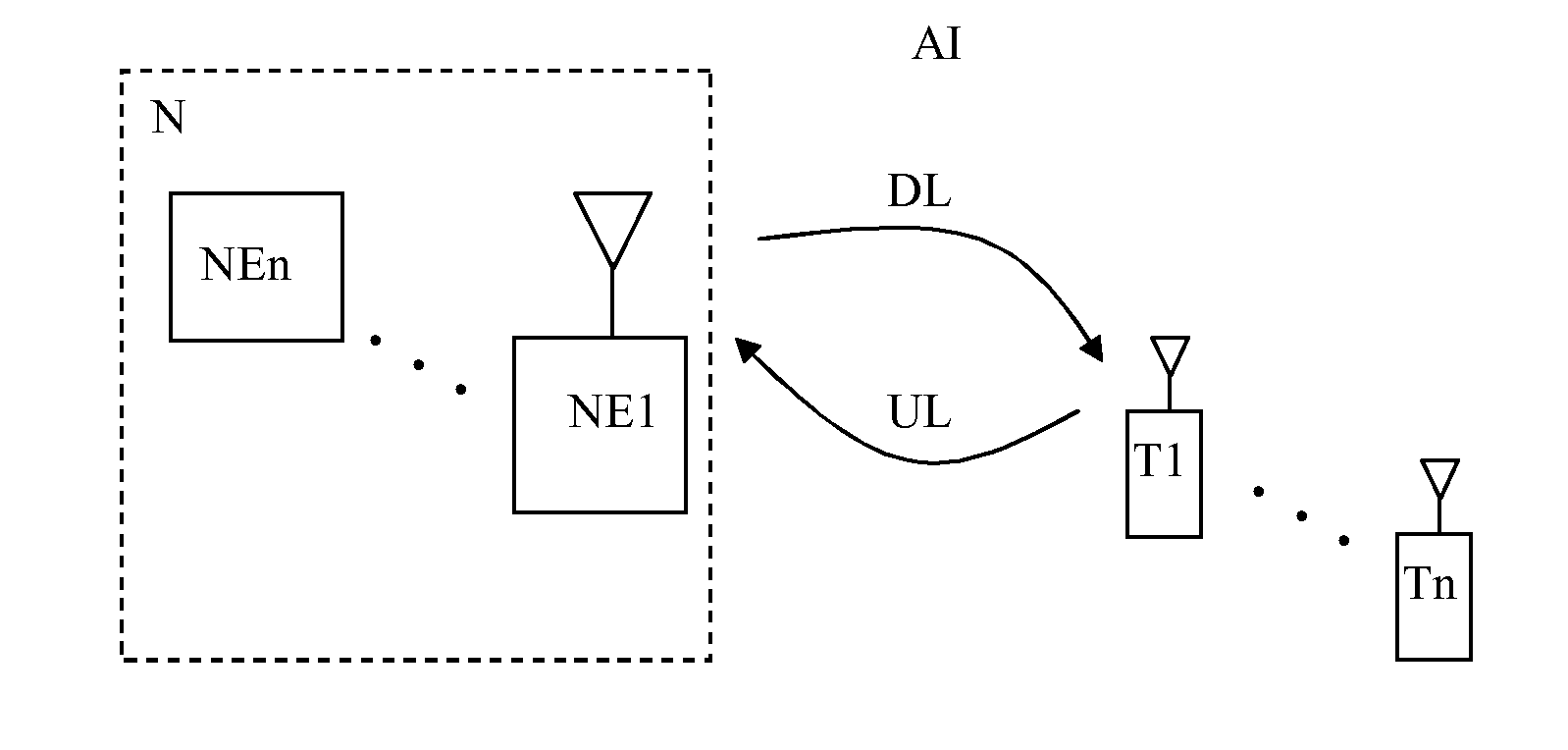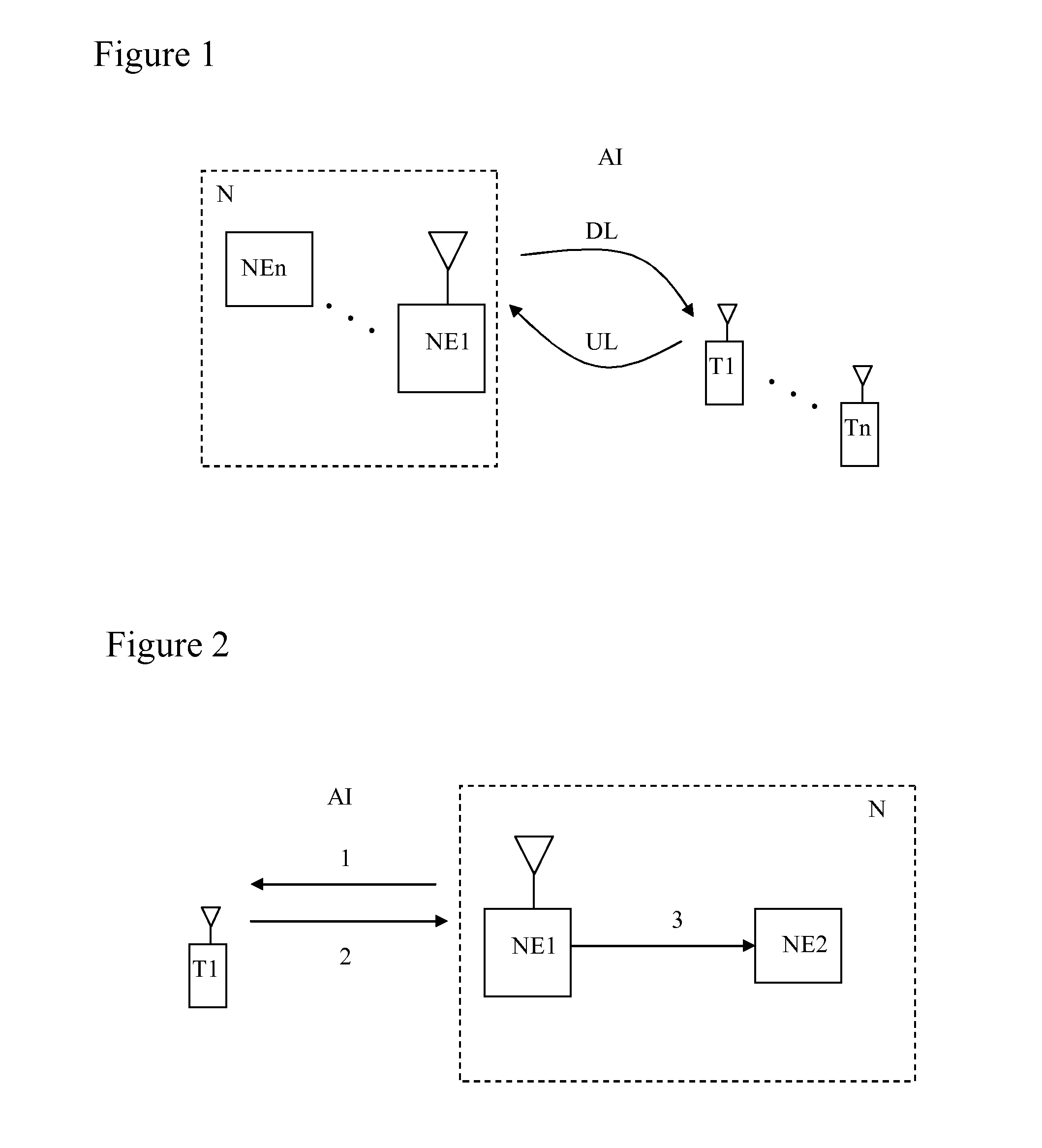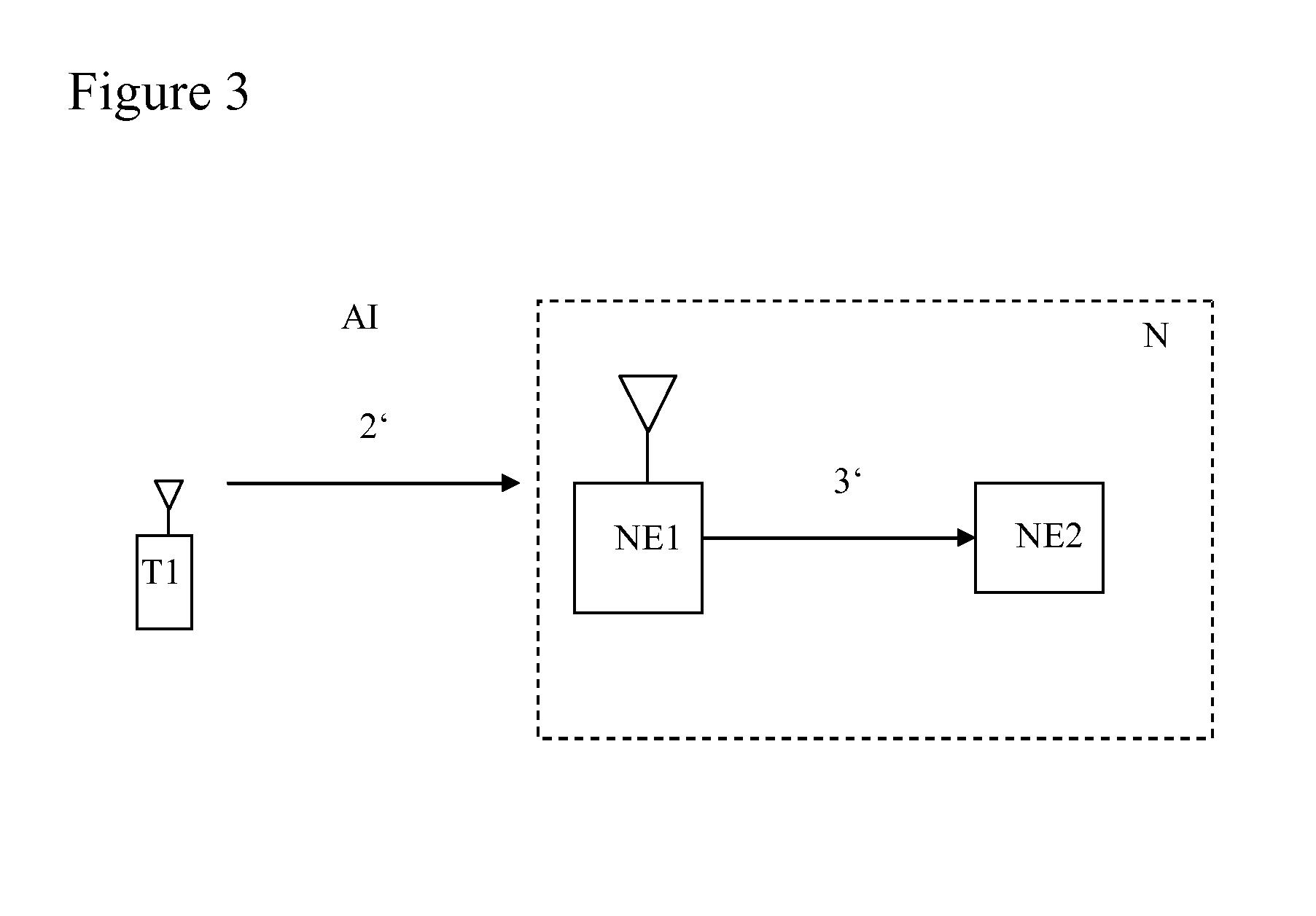Method for transmission of high speed uplink packet access data information in a cellular communication system
- Summary
- Abstract
- Description
- Claims
- Application Information
AI Technical Summary
Benefits of technology
Problems solved by technology
Method used
Image
Examples
Example
DETAILED DESCRIPTION OF THE DRAWINGS
[0024]FIG. 1 shows a block diagram of a wireless communications system comprising a mobile network N with a plurality of network elements NE1 to NEn, a radio air interface AI, downlink DL and uplink UL radio air interface connections, and a plurality of mobile user equipments or terminals T1 to Tn.
[0025]The mobile network N exchanges data information with the plurality of terminals T1 to Tn via the radio air interface downlink DL and an uplink connections UL. The network elements NE1 to NEn of the mobile network N can be for example base stations or Node Bs, radio network controllers RNCs or serving radio network controller SRNC, core network switches, or any other type of communication entities which are generally used for data network communications. The uplink connection UL may provide HSUPA capabilities for high speed uplink packet access.
[0026]FIG. 2 shows a block diagram of a wireless communications system comprising a mobile network N with ...
PUM
 Login to View More
Login to View More Abstract
Description
Claims
Application Information
 Login to View More
Login to View More - R&D
- Intellectual Property
- Life Sciences
- Materials
- Tech Scout
- Unparalleled Data Quality
- Higher Quality Content
- 60% Fewer Hallucinations
Browse by: Latest US Patents, China's latest patents, Technical Efficacy Thesaurus, Application Domain, Technology Topic, Popular Technical Reports.
© 2025 PatSnap. All rights reserved.Legal|Privacy policy|Modern Slavery Act Transparency Statement|Sitemap|About US| Contact US: help@patsnap.com



